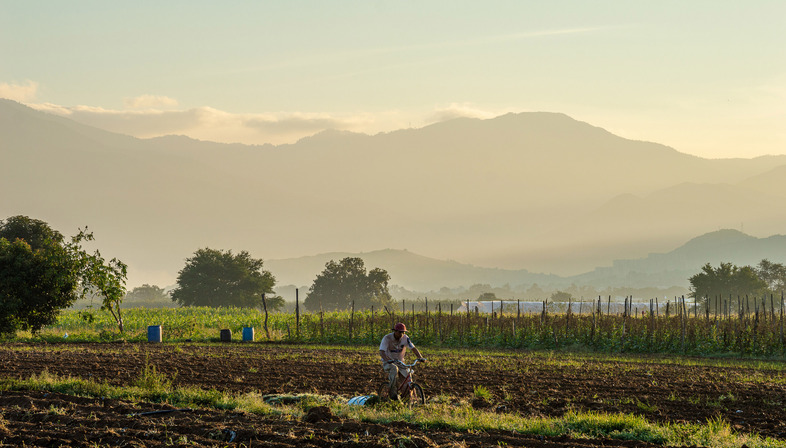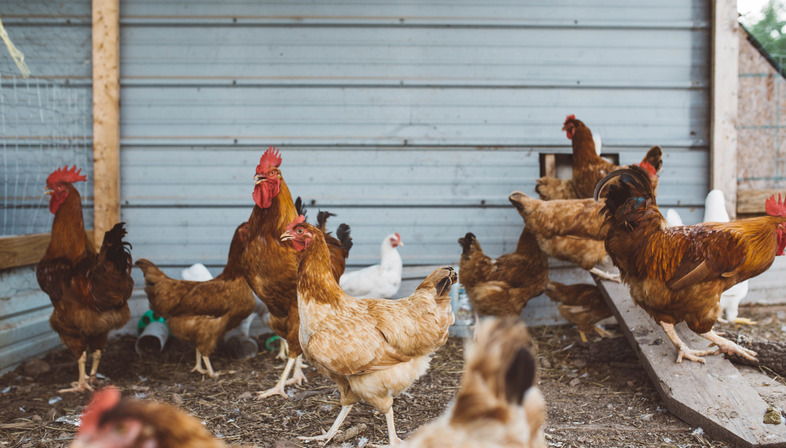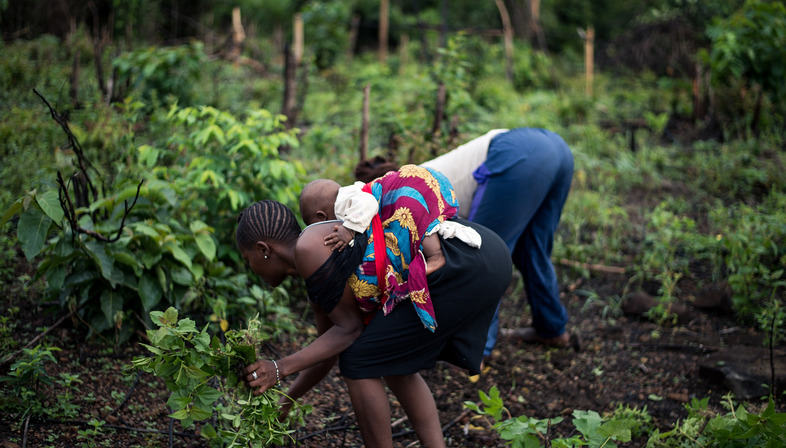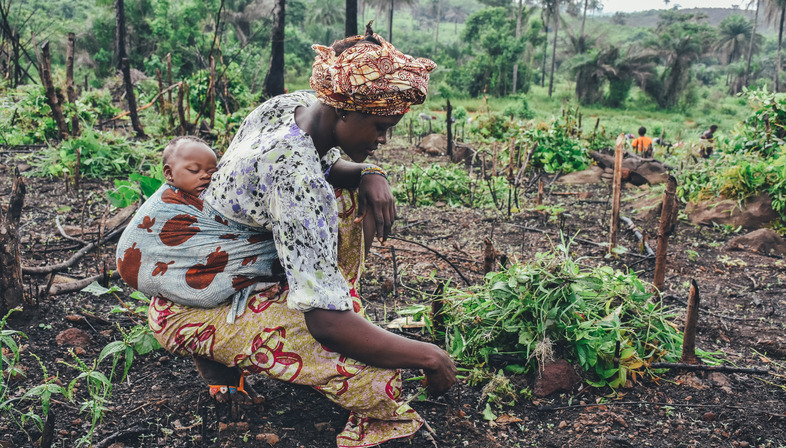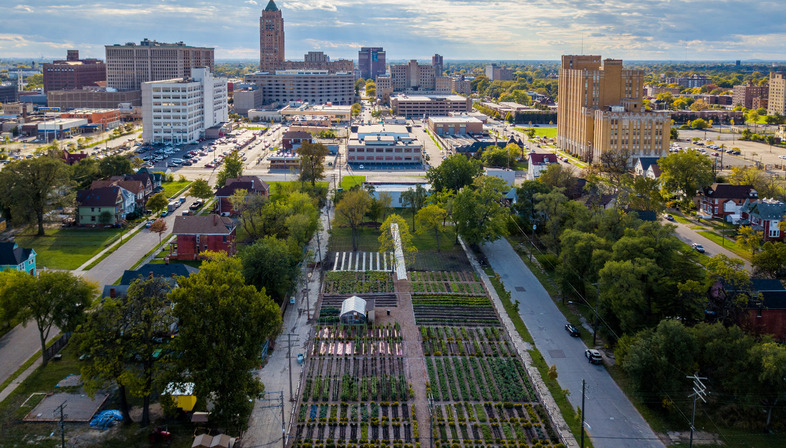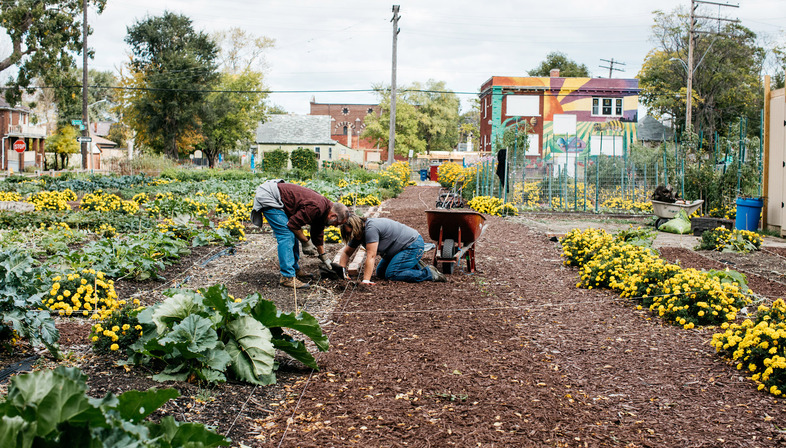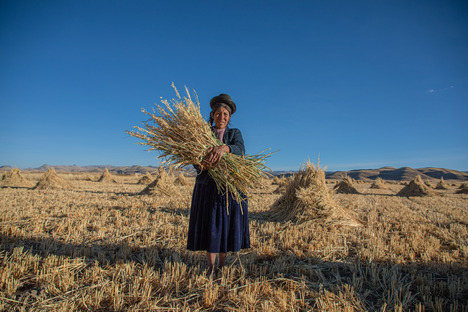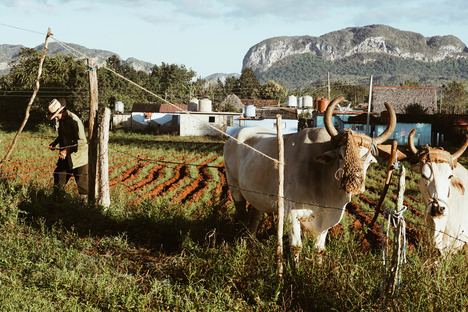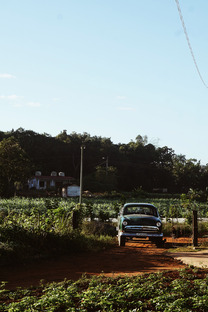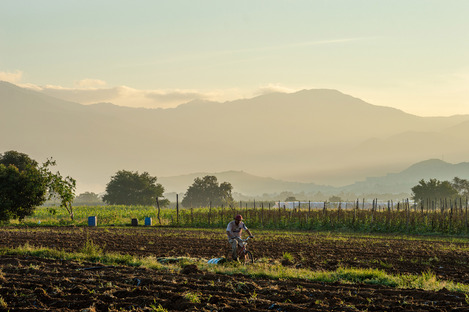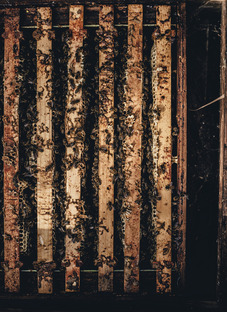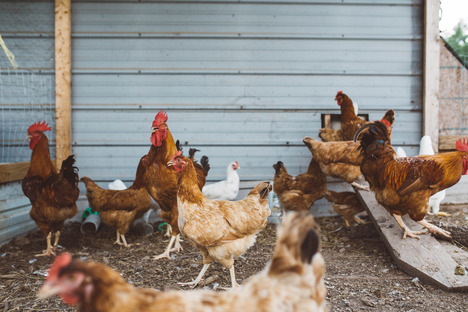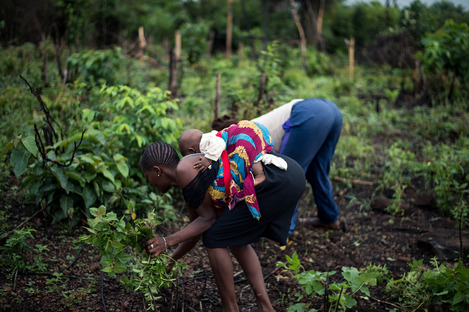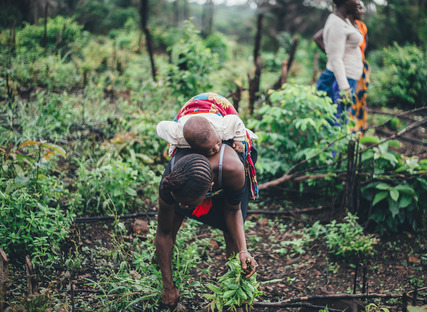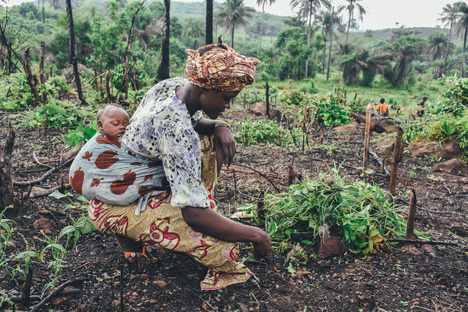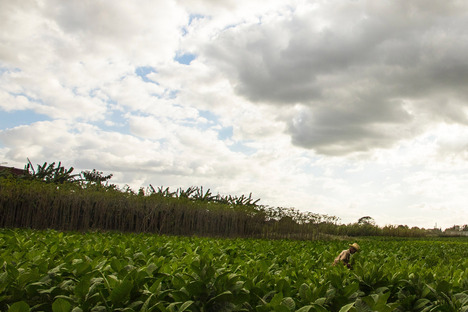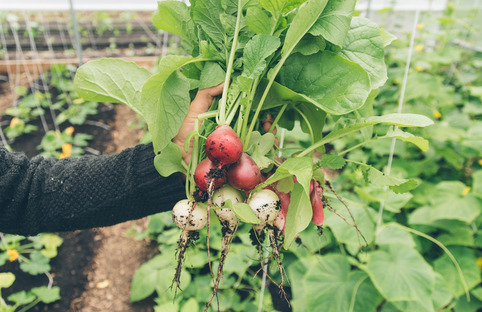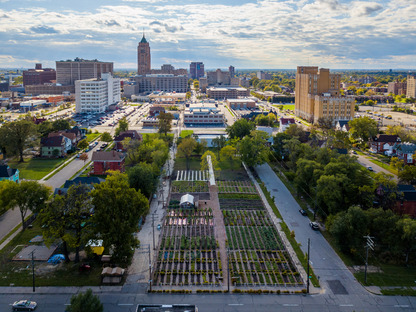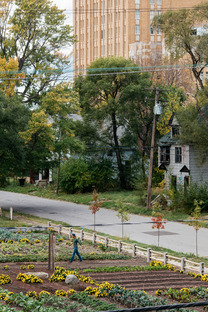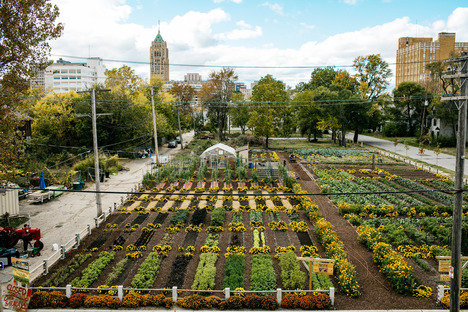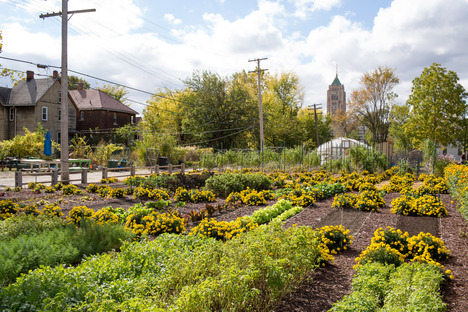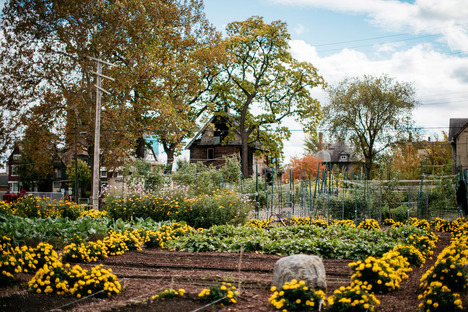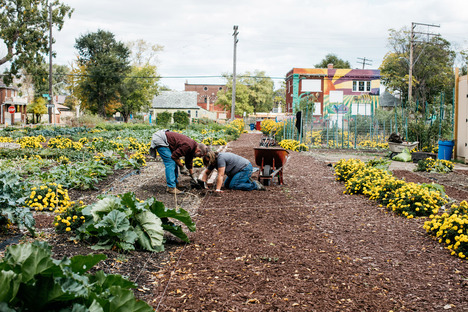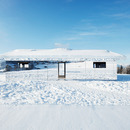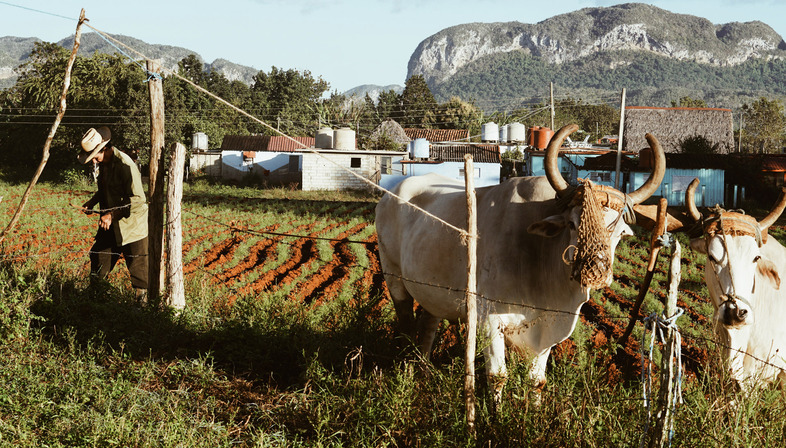
Paused...
Farming for my point of view, well represents this metaphor, having the power to sprout a magical universe of delights that never stop surprising us with their incredible beauty and deliciousness. Of course the seed does not grow spontaneously like in Jack's fairy tale and it is with love, effort and patience that we can get satisfying results. I think we are currently experiencing a tendency that leads us to envisage the possibility of an escape to the countryside, with an adjoining garden to cultivate, as a romanticized aspiration, nourished by the idea of a peaceful and gratifying context, a reaction to a lifestyle that causes us restlessness and anxiety. The work in the fields is currently not exactly as the one nurtured in our dreams: computerized and mechanized it has completely lost that value of collective manual effort and the farmer, rather than facingthe physical exhaustion of the past, has instead to manage a digitalized system, which regulates both agricultural and farming duties. I do not want to nostalgically say that we should return to those heavy sacrifices that generations of families have been forced to bear but the new procedures, which have certainly helped and alleviated a lot, have also completely subverted not only a working calendar marked by specific rhythms but also those rules of respect ensuring the fragile balance of biodiversity.
The earth in moments of emergency more than once has supplied us a source of survival and it is a lesson that we should remember, avoiding treating it without any respect and impoverishing its fertility. This help saved two islands that in a desperate situation, with nothing left to eat, found salvation in collective collaboration and in the cultivation of every piece of land available. The first case concerns Cuba, an island with a troubled past that in 1989 found itself completely cut off from the rest of the world with heavy trade sanctions, an economic crisis in the meantime worsened and a severe restriction on imports of goods. Sidelined in the international trade due to the tense relationship with the United States, and the collapse of the Soviet Union, which had previously provided it with essential products for its economy, it risked facing one of the worst plagues of hunger, malnutrition and lack of electricity. The nation heavily relied on the supply of oil, fertilizers and chemical pesticides granted by the USSR to support the transportation sectors, tractors, agriculture and industrial equipment. With the oil-for-sugar program interrupted and unable to procure externally the aid it needed, it witnessed the collapse of all the systems that until then had provided its survival.
Fidel Castro, in power at the end of 1958, had developed a revolutionary agrarian reform, transforming the scenario dominated at that time by landlords, which saw the fertile Cuban land mainly destined for monocultures of sugar cane, tobacco and livestock for export. By nationalizing most of the land and redistributing it to cooperatives and rural families, he had also invested large sums in an improvement process and production doubled within a decade. Unfortunately, this growth led to greater agricultural mechanization with the subsequent reintroduction of monoculture and the widespread use of chemical fertilizers and pesticides produced abroad. Several are the causes of the disintegration of the ideals that had animated and supported the Green Revolution. The highly foreign-dependent agri-food system had represented an advance in terms of increase in production but also a gradual deterioration of products and environment, and for the first time in the Cuba of Fidel Castro it caused a state of emergency with a dramatic impact on people's lives and with one of the most drastic shortages of primary food.
The tragic situation lasted for five years, sadly known as the Special Period in Peacetime and cost the population heavy sacrifices such as waiting for a bus for hours, power outages that could last all day and persistent hunger, which will force to a sort of vegan diet, due to a lack of meat and dairy products. The terrible experience led to react, creating a unique agricultural infrastructure system, for how it has been able to self-organize and become self-sufficient, offering one of the most significant models of semi-sustainable work. Faced with the serious crisis, the inhabitants began to revolutionize the cultivation procedures, replacing the old industrialized form with organic farming, organically harvesting and cultivating their vegetables or fruit, applying simple techniques of agro-culture or permaculture, which did not require aggressive chemical fertilizers or fuel. A type of progressive agriculture expanded along the densely populated urban fabric of Havana: with actions of 'guerrilla gardening' were occupied fragments of land on a more or less reduced scale and in different positions, on balconies, roofs, in green courtyards a little larger than dots, or along acres of fields. Farms and small gardens were improvised into vacant properties and abandoned warehouses in decaying conditions. Initiatives in underutilized urban spaces multiplied, transforming them into exceptionally productive areas. The individuals revealed exceptional talents: small businesses multiplied, born out nothing and able to organize production and integrated recycling patterns without waste in the few meters available. Cuba, once managed to handle the emergency, unfortunately will experience other problems but this gradual and tiring change has shown its extraordinary significance. Urban agriculture becomes the systematic solution for the island, a way to accumulate food supplies and to act collectively against any urgency.
There is another island state, Antigua and Barbuda, a beautiful reality on the eastern Caribbean coast which, due to an unstable economy, suddenly found itself in a condition of emergency. The impact of food price inflation and the destructive rage of several hurricanes caused in 2008 an economic and natural disaster. Floods wiped out agricultural land, eliminating most of the livestock, the crops were lost and the population found itself in absolute poverty. The government, to overcome the catastrophe, embraced a plan to help food production, promoting in particular home backyard gardens, to grow food for the family and a little extra to share with friends and neighbors, a long tradition fallen into decline, due to the gradual adoption of diets rich in fat, sugars and salt. A campaign, known as ‘National Backyard Gardening Program’, was launched, aimed at achieving and perhaps overcoming ‘zero hunger', at accelerating and strengthening a weak food supply system, adopting easy cultivation techniques with relative growth of tropical vegetables and fruit in a concentration of small scale lots from 1 to 10 square meters, within the city of Saint John's.
The program, limited to a manageable size, had the advantage of guaranteeing decent consumption per household, or neighborhood, without requiring laborious or complicated industrial methods and allowing rapid regeneration of the land. Government support was essential, providing backyard farmers with a complete kit of vegetable seeds, fruit trees and the advice of an assistant at a minimum or completely free cost. In 2009, the intervention expanded and, assisted by the Ministry of Agriculture, introduced specific public policies and urban development strategies concerning land use, encouraging the upgrading of irrigation systems, fertilization points, dams, wells and laboratories towards more adequate infrastructures, to support the efforts of the community in home farming. Modernizing skills and applying simple systems such as drip irrigation or vermicompost, micro-gardens began to flourish throughout the city with many volunteers and a widespread sense of common responsibility. The desire to find a remedy and ensure a future of survival gradually became unanimous, not only limiting adverse environmental conditions, chronic water scarcity and widespread deforestation, but giving a purpose to a sacrifice gradually transformed into pleasure. A network of sharing, exchange of experiences and mutual helps which makes optimistically foresee a growth and an ever greater cooperation.
It is not the first time that agriculture had experienced difficult times in this insular reality: the rapid tourist boom of the 1990s, arrived to represent over 80% of the annual GDP, had practically forced the population to abandon this main resource. Agriculture in the countryside has been slowly replaced by new land uses for tourism development, resorts, hotels or real estate construction, forcing many to leave the country in the hope of new opportunities. Today, horticulture, renewing an apparently insignificant ancestral activity, has become one of the dominant activities on the island, with over 2500 families who, engaged in this initiative, are able to satisfy their own needs and the necessities of those who live next door, with the chance also of selling part of the products in local markets and shops, some dedicating themselves to manufacture sauces, jams and jellies and some to apiculture in the courtyards. When the country in 2008 was in severe crisis it could barely meet a quarter of local demand, now an increase of over 60% is taking place. Peri-urban horticulturists, who have expanded their tiny plots by a few hectares, have tripled production. Also schools have been involved in the agenda, participating in the campaign: "Grow what you eat", trying to educate young people to be aware of a sustainable type of life and diet. The movement's popularity has grown and the participant base now includes in addition to schools, religious organizations, community groups, para-military services and prisons. Antigua and Barbuda, after a period of suffering, with great self-determination have been able to demonstrate with small but precise actions, united by the common effort for the growth of urban agriculture, alongside the rural one, to have achieved a strategy to reduce poverty and hunger for a more resilient society, creating a real bulwark for food supply against the unfortunately frequent events of extreme weather.
Leaving the islands and coming to the mainland, I would like to mention an example that can make us reflect on the danger of the dependence of an urban economy on a single type of industry. Detroit, the so-called Motor City, considered the symbol of corporate America, embodied the ideals of a city shaped by a consumerist culture and industrialization. With the oil crisis in the 1970s, many car manufacturers could not withstand foreign competition, leading to a real collapse, aggravated by the severe economic recession of 2008. A totally different and uncertain future was foreshadowed at that time for a city depending on only this industrial sector and living a particularly difficult social reality due to the racial tensions that were always fed and deliberately left unresolved. Grown very rapidly, it began to shrink dramatically: many factories closed and many left, entire neighborhoods and commercial spaces were left abandoned. Large decentralized isolated ghettos, buildings with no one left, huge streets without cycle paths with very narrow sidewalks and very few green spaces represented in summary the decline caused by the sad recession.
The city on the edge of bankruptcy can be considered under all respects "icon of urban decay in the US Engine”. Poverty, crime, racial discrimination and social tensions worsened, representing the new everyday life of a center that can be defined of colossal dimensions, one third left depopulated.
'Food desert', is how is now labeled Detroit due to the widespread lack of fresh food and impossibility of adequate diets. At this point agriculture begins to emerge among the cracks of a shrinking urban fabric, incredibly growing and recently reaching 3,000 farms and gardens, with a production of about 5% of all fruit and the vegetables once consumed. There are no signs of slowing down and really many are the initiatives promoted by different bodies in support of this green purpose: greening objectives, forestry programs, bio-revitalisation, with professional training from landscape to agriculture and forestry with job opportunities for the unemployed.
Among the many non-profit organizations, stand out the intentions of the group Michigan Urban Farming Initiative, that works with the aim of breaking the cycle of poverty by providing and distributing the food it produces at no cost among poor families and disadvantaged communities. D-Town Farm, another urban farm, considered the largest, expanded over 7 acres of land, provides weekly volunteer contributions and supports healthier food growth based on herbs, vegetables and fruit, providing residents with educational and community resources to create, thanks to this common goal, a bridge background. The city is taking on the new configuration of “an ‘archipelago’ of revitalized neighborhoods linked by public green space, be it urban agriculture, parks or solar and wind farms, almost to echoing the ribbon of farms of the region's original French farmer inhabitants ". The regeneration is working really well in its intent to fight vandalism, unemployment, inequalities and the gradual decline, offering new healthier living conditions both from an environmental and nutritional point of view but sometimes, unfortunately, unplanned consequences escape even the best of intentions.
Agriculture, as a design strategy for a green productive transformation of vacant lots in degraded and abandoned city areas, if on one hand helps to reintegrate areas that have remained marginalized, remodeling and embellishing the desolate urban fabric, improving sustainability in its fullest meaning, existential and environmental conditions of citizens, on the other hand, can cause, even if unintentionally, an increase of land value and real estate prices, provoking gentrification, a sad and difficult problem. Although steps have been taken for a growth less irregular as possible, trying to guarantee the former Motor City a better future, this dangerous possibility does not seem so obvious to be avoided.
Virginia Cucchi
Credits:
Cover, Photo di Cesar Carlevarino Aragon, Unsplash
1-2, Photo di Jennifer Chen, Unsplash
3 Photo di Gaspar Hernandez, Unsplash
4 Photo di Annie Spratt
5 Photo di Brooke Cagle
6-8 Photo di Annie Spratt
9 Photo di Robin Canfield
11 Photo di Nadri Ali, MUFI, Michigan Urban Farming Initiative/Cortesia di MUFI Detriot
12-16 Photo di MUFI, Michigan Urban Farming Initiative/ Cortesia di MUFI Detriot










